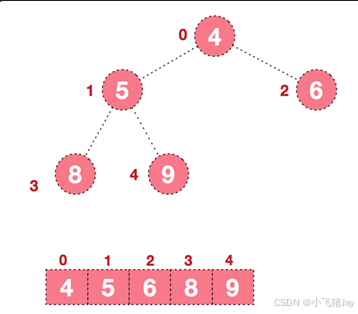前端页面模块修改成可动态生成数据模块:
这些案例展示了如何通过Blade模板将前端页面模块变成可动态生成的模板。通过巧妙使用Blade语法、控制结构、CSS/JS分离、组件复用等技巧,可以大大提高代码的灵活性和复用性。在Laravel的Controller中准备好数据并传递给模板,是动态生成页面模块的核心。
案例 1:自定义商品列表展示模块
前后变化:
静态HTML代码(前):
<div class="product-item"><img src="images/product1.jpg" alt="Product 1"><h2>Product 1</h2><p>This is a great product.</p><span>$29.99</span>
</div><div class="product-item"><img src="images/product2.jpg" alt="Product 2"><h2>Product 2</h2><p>This is another great product.</p><span>$39.99</span>
</div>
动态Blade模板代码(后):
@foreach($products as $product)<div class="product-item"><img src="{{ $product['image'] }}" alt="{{ $product['title'] }}"><h2>{{ $product['title'] }}</h2><p>{{ $product['description'] }}</p><span>${{ $product['price'] }}</span></div>
@endforeach
setting.json 文件:
{"name": "product-list","title": "商品列表模块","schema": [{"type": "section","name": "section","label": "商品列表设置"},{"type": "combo","name": "products","label": "商品信息","multiple": true,"multiLine": true,"value": [{"title": "Product 1","image": "images/product1.jpg","description": "This is a great product.","price": "29.99"},{"title": "Product 2","image": "images/product2.jpg","description": "This is another great product.","price": "39.99"}],"items": [{"type": "input-text","name": "title","label": "商品标题"},{"type": "input-image","name": "image","label": "商品图片"},{"type": "textarea","name": "description","label": "商品描述"},{"type": "input-number","name": "price","label": "价格"}]}]
}
setting_data.json 文件:
{"products": [{"title": "Product 1","image": "images/product1.jpg","description": "This is a great product.","price": "29.99"},{"title": "Product 2","image": "images/product2.jpg","description": "This is another great product.","price": "39.99"}]
}
案例 2:可自定义的博客文章卡片模块
前后变化:
静态HTML代码(前):
<div class="post-card"><h3>Post Title 1</h3><p>This is a brief description of the post.</p><p>By Author Name on January 1, 2024</p>
</div><div class="post-card"><h3>Post Title 2</h3><p>This is another brief description of the post.</p><p>By Another Author on February 15, 2024</p>
</div>
动态Blade模板代码(后):
@foreach($posts as $post)<div class="post-card"><h3>{{ $post['title'] }}</h3><p>{{ Str::limit($post['content'], 100) }}</p><p>By {{ $post['author'] }} on {{ $post['published_at']->format('M d, Y') }}</p></div>
@endforeach
setting.json 文件:
{"name": "blog-posts","title": "博客文章模块","schema": [{"type": "section","name": "section","label": "博客文章设置"},{"type": "combo","name": "posts","label": "文章信息","multiple": true,"multiLine": true,"value": [{"title": "Post Title 1","content": "This is a brief description of the post.","author": "Author Name","published_at": "2024-01-01"},{"title": "Post Title 2","content": "This is another brief description of the post.","author": "Another Author","published_at": "2024-02-15"}],"items": [{"type": "input-text","name": "title","label": "文章标题"},{"type": "textarea","name": "content","label": "文章内容"},{"type": "input-text","name": "author","label": "作者"},{"type": "input-date","name": "published_at","label": "发布日期"}]}]
}
setting_data.json 文件:
{"posts": [{"title": "Post Title 1","content": "This is a brief description of the post.","author": "Author Name","published_at": "2024-01-01"},{"title": "Post Title 2","content": "This is another brief description of the post.","author": "Another Author","published_at": "2024-02-15"}]
}
案例 3:自定义统计数字板块
前后变化:
静态HTML代码(前):
<div class="stat-item"><span class="stat-number" data-count="4465">0</span><p>Projects</p>
</div><div class="stat-item"><span class="stat-number" data-count="4">0</span><p>Factories</p>
</div>
动态Blade模板代码(后):
@foreach($statistics as $stat)<div class="stat-item"><span class="stat-number" data-count="{{ $stat['num'] }}">0</span><p>{{ $stat['title'] }}</p></div>
@endforeach
<script src="{{ asset('js/counter.js') }}"></script>
setting.json 文件:
{"name": "stat-counter","title": "统计数字板块","schema": [{"type": "section","name": "section","label": "统计数字设置"},{"type": "combo","name": "statistics","label": "统计信息","multiple": true,"multiLine": true,"value": [{"title": "Projects","num": "4465"},{"title": "Factories","num": "4"}],"items": [{"type": "input-text","name": "title","label": "统计项标题"},{"type": "input-number","name": "num","label": "统计项数字"}]}]
}
setting_data.json 文件:
{"statistics": [{"title": "Projects","num": "4465"},{"title": "Factories","num": "4"}]
}
案例 4:客户评价轮播模块
前后变化:
静态HTML代码(前):
<div class="testimonial-item"><img src="images/client1.jpg" alt="Client 1"><h4>Client 1</h4><p>"This is a great product!"</p>
</div><div class="testimonial-item"><img src="images/client2.jpg" alt="Client 2"><h4>Client 2</h4><p>"I highly recommend this company!"</p>
</div>
动态Blade模板代码(后):
<div class="testimonials-carousel">@foreach($testimonials as $testimonial)<div class="testimonial-item"><img src="{{ $testimonial['avatar'] }}" alt="{{ $testimonial['name'] }}"><h4>{{ $testimonial['name'] }}</h4><p>"{{ $testimonial['review'] }}"</p></div>@endforeach
</div>
<script src="{{ asset('js/carousel.js') }}"></script>
setting.json 文件:
{"name": "testimonials-carousel","title": "客户评价轮播模块","schema": [{"type": "section","name": "section","label": "客户评价设置"},{"type": "combo","name": "testimonials","label": "客户评价信息","multiple": true,"multiLine": true,"value": [{"name": "Client 1","review": "This is a great product!","avatar": "images/client1.jpg"},{"name": "Client 2","review": "I highly recommend this company!","avatar": "images/client2.jpg"}],"items": [{"type": "input-text","name": "name","label": "客户姓名"},{"type": "textarea","name": "review","label": "评价内容"},{"type": "input-image","name": "avatar","label": "客户头像"}]}]
}
setting_data.json 文件:
{"testimonials": [{"name": "Client 1","review": "This is a great product!","avatar": "images/client1.jpg"},{"name": "Client 2","review": "I highly recommend this company!","avatar": "images/client2.jpg"}]
}
案例 5:自定义导航菜单
前后变化:
静态HTML代码(前):
<nav><ul><li><a href="/home">Home</a></li><li><a href="/about">About Us</a></li><li><a href="/services">Services</a></li><li><a href="/contact">Contact Us</a></li></ul>
</nav>
动态Blade模板代码(后):
<nav><ul>@foreach($menuItems as $menuItem)<li><a href="{{ $menuItem['url'] }}">{{ $menuItem['name'] }}</a></li>@endforeach</ul>
</nav>
setting.json 文件:
{"name": "nav-menu","title": "导航菜单模块","schema": [{"type": "section","name": "section","label": "导航菜单设置"},{"type": "combo","name": "menuItems","label": "菜单项","multiple": true,"multiLine": true,"value": [{"name": "Home","url": "/home"},{"name": "About Us","url": "/about"}],"items": [{"type": "input-text","name": "name","label": "菜单名称"},{"type": "input-url","name": "url","label": "菜单链接"}]}]
}
setting_data.json 文件:
{"menuItems": [{"name": "Home","url": "/home"},{"name": "About Us","url": "/about"}]
}
文件生成的注意事项以及实现过程:
文件生成过程:
-
确定模块的动态部分:
- 找出哪些内容需要通过外部数据动态生成,如商品列表、博客文章、统计数据等。
- 将这些内容抽象为数据结构,以便后续可以通过Blade模板渲染。
-
创建
setting.json文件:setting.json文件定义了模块的设置项。该文件用于描述页面模块的结构、可配置项(如文本、图片、数字等)。- 定义集合(如商品列表、菜单项等)的字段结构,确保数据类型正确,并指定默认值。
- 示例:为每个集合项指定
input-text(文本输入框)、textarea(多行文本输入)、input-image(图片选择)、input-number(数字输入)等控件类型。
-
创建
setting_data.json文件:setting_data.json文件用于存储实际的动态数据。该文件可以根据实际项目需要进行调整,加载页面时会作为初始数据传递给模板。- 根据
setting.json中定义的字段结构,填充实际数据,如商品信息、文章内容、统计数字等。
-
在Blade模板中使用数据:
- 通过Blade语法(如
@foreach)遍历传递的数据集合,并动态渲染HTML内容。 - 使用
{{ $variable }}将数据插入到HTML中。
- 通过Blade语法(如
注意事项:
-
数据结构保持一致:
setting.json和setting_data.json文件中的数据结构必须保持一致。setting.json定义了数据结构,setting_data.json则提供实际数据。
-
类型和格式的匹配:
- 确保
setting.json中的字段类型与前端的Blade模板中的使用保持一致。例如,如果定义了input-number,确保Blade模板中相应字段被处理为数字。
- 确保
-
多样化的数据格式支持:
- 可以在
setting.json中为不同的字段类型设置对应的表单元素(如文本、数字、图片等),确保前端支持各种数据格式的动态加载。
- 可以在
通过这种方式,你可以生成高度动态化和模块化的前端页面,实现自定义的集合内容模块,提升页面的可复用性和扩展性。
将前端页面模块转换为可自定义集合内容的Blade模板是一项常见的任务,特别是在Laravel框架中构建可复用的动态前端页面时。
主要过程:
-
确定模块化的静态HTML部分:
- 首先,确定页面中哪些部分是动态的,哪些部分是静态的。静态部分可以保持不变,而动态部分则需要用Blade变量替换。
-
将静态HTML模板转换为Blade模板:
- 将静态HTML中的内容替换为Blade模板语法。将数据、文本、图片路径等元素替换为Blade中的变量(如
{{ $variable }}),便于传递动态数据。
- 将静态HTML中的内容替换为Blade模板语法。将数据、文本、图片路径等元素替换为Blade中的变量(如
-
使用Blade的控制结构:
- 使用Blade的控制结构(如
@foreach,@if等)处理需要重复或条件渲染的内容。例如,使用@foreach来循环遍历集合数据,生成多段相似的HTML。
- 使用Blade的控制结构(如
-
在Controller中处理数据传递:
- 在Laravel的Controller中准备好所需的动态数据,并传递给Blade模板。可以使用
compact()或with()方法将数据传递到视图中。
- 在Laravel的Controller中准备好所需的动态数据,并传递给Blade模板。可以使用
-
Blade组件和部分复用:
- 利用Blade组件(如
@component,@include)将常见的部分提取出来,以便在不同的页面或不同的模块之间复用。这使得代码更加简洁和易于维护。
- 利用Blade组件(如
技巧:
-
Blade变量与集合数据结合:
- 将HTML中需要动态替换的部分替换为Blade变量,如标题、描述、图片、链接等。通过在
Controller中将集合数据传递给Blade模板,模板可以根据不同的数据动态生成页面内容。
- 将HTML中需要动态替换的部分替换为Blade变量,如标题、描述、图片、链接等。通过在
-
条件渲染和循环:
- 利用Blade的控制语句(如
@foreach,@if),可以动态渲染数据。这在处理列表或数组类型的数据时尤为有用。根据数据的有无或其他条件来决定是否渲染某些内容。
- 利用Blade的控制语句(如
-
使用Blade组件提高代码复用性:
- 将重复使用的页面片段转化为Blade组件或者部分模板,便于在不同的页面中引用和复用。组件还可以接受参数,进一步提高其灵活性。
-
CSS和JS模块化处理:
- 当某个前端模块需要与多个页面共享时,可以将相应的CSS和JS文件分离出来,并在Blade模板中根据需要进行引入。
-
JSON或API数据的处理:
- 可以通过读取JSON文件或调用API,将数据传递给Blade模板,实现前端的动态渲染。比如,利用
json_decode()函数读取配置文件并将其传递给Blade模板。
- 可以通过读取JSON文件或调用API,将数据传递给Blade模板,实现前端的动态渲染。比如,利用



